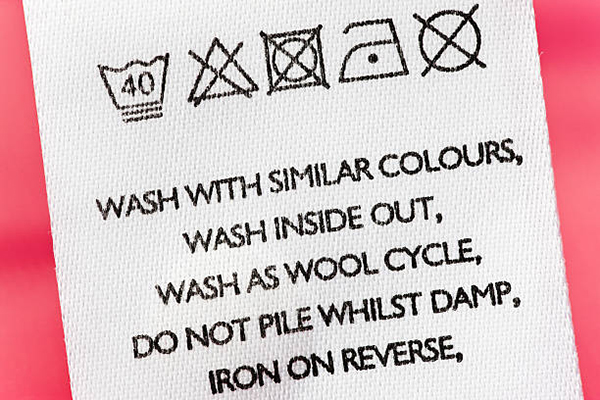1. Wash less
Less is more. This is definitely good advice when it comes to laundry. For longevity and durability, 100% cotton t-shirts should be washed only when needed.
While premium cotton is strong and durable, each wash puts stress on its natural fibers and eventually causes t-shirts to age and fade faster. Therefore, washing sparingly may be one of the most important tips for extending the life of your favorite t-shirt.
Each wash also has an impact on the environment (in terms of water and energy), and washing less can help reduce one’s water usage and carbon footprint. In Western societies, laundry routines are often based more on habit (e.g., wash after every wear) than on actual need (e.g., wash when it’s dirty).
Washing clothes only when needed is certainly not unhygienic, but rather helps to create a more sustainable relationship with the environment.
2. Wash in a similar color
White with white! Washing brighter colors together will help keep your summer t-shirts looking fresh and white. By washing lighter colors together, you reduce the risk of your white T-shirt turning gray or even getting stained by another piece of clothing (think pink). Often darker colors can be put together in the machine, especially if they have been washed several times.
Sorting your clothes by fabric type will further optimize your wash results: sportswear and workwear may have different needs than a super-delicate summer shirt. If you’re not sure how to wash a new garment, it always helps to take a quick look at the care label.
3. Wash in cold water
100% cotton t-shirts are not heat resistant and will even shrink if washed too hot. Obviously, detergents work better at higher temperatures, so it’s important to find the right balance between washing temperature and effective cleaning. Dark t-shirts can usually be washed completely cold, but we recommend washing perfect white t-shirts at around 30 degrees (or 40 degrees if desired).
Washing your white T-shirts at 30 or 40 degrees ensures that they will last longer and look fresher, and reduces the risk of any unwanted color (such as yellow marks under the armpits). However, washing at a fairly low temperature can also reduce the environmental impact and your bill: lowering the temperature from just 40 degrees to 30 degrees can reduce energy consumption by up to 35%.
4. Wash (and dry) on the reverse side
By washing t-shirts “inside out”, the inevitable wear and tear occurs on the inside of the t-shirt, while the visual effect on the outside is not affected. This reduces the risk of unwanted linting and pilling of natural cotton.
T-shirts should also be turned over to dry. This means that potential fading will also occur on the inside of the garment, while the outside surface remains intact.
5. Use the right (dosage) detergent
There are now more eco-friendly detergents on the market that are based on natural ingredients while avoiding chemical (oil-based) ingredients.
However, it is important to remember that even “green detergents” can pollute waste water – and damage clothes if used in excessive amounts – because they can contain a large number of different substances. Since there is no 100% green option, remember that using more detergent will not make your clothes cleaner.
The less clothes you put in the washing machine, the less detergent you need. This also applies to clothes that are more or less dirty. In addition, in areas with softer water, you can use less detergent.
Post time: Feb-03-2023





